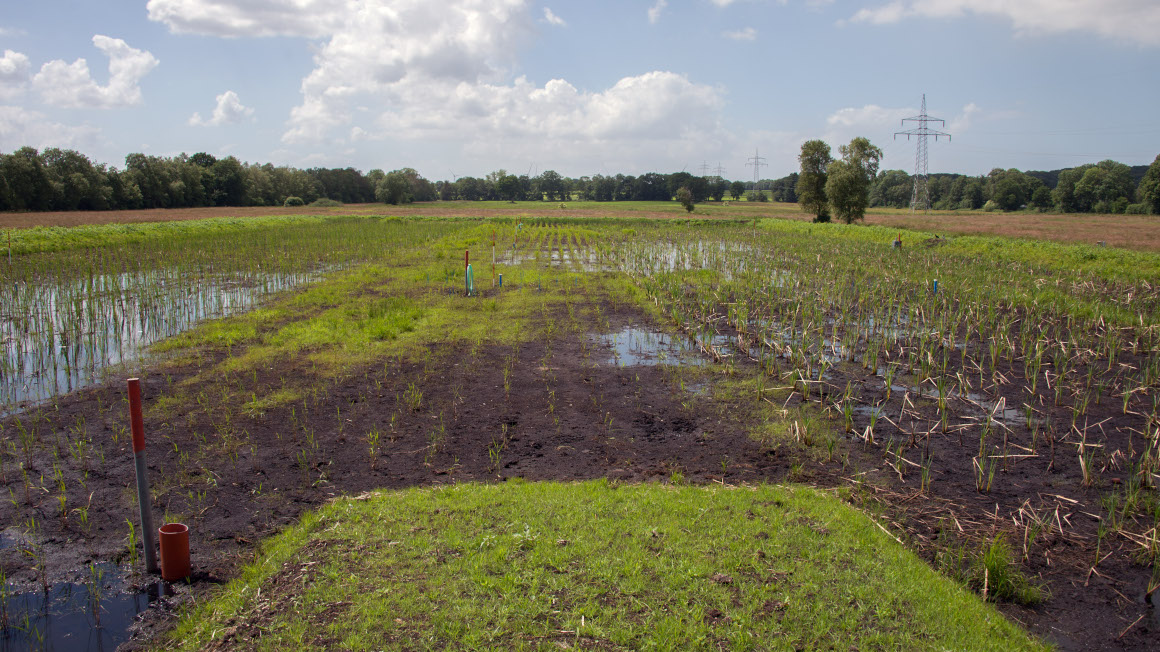Paludiculture creates biodiversity
Paludiculture in rewetted fens not only promotes biodiversity, but also provides a new habitat for endangered animal and plant species. This is shown by a study by the University of Greifswald.

An international study from 2022 shows that wetlands such as peatlands can store five times more carbon per square meter than forests and even 500 times more than the oceans. In Germany, peatlands have been drained in recent decades in order to be able to use the land for agriculture. This has not only destroyed the habitat of many plants and animals, but also an important CO2 reservoir. Paludiculture stands for revitalizing peatlands as CO2 reservoirs in a sustainable and gentle way and thus also making them usable as a resource for the bioeconomy. Researchers at the Universities of Greifswald and Rostock have been able to prove that rewetted peat bog cultures are real greenhouse gas sinks. Up to 85% of CO2 emissions can be saved in this way.
Paludiculture in sustainably managed fens
In a new study published in the journal Nature, researchers from the Botany and Landscape Ecology and Zoology departments at the University of Greifswald have now shown the influence of paludiculture on species diversity in rewetted fens. The diversity of vegetation, breeding birds and arthropods was investigated at six rewetted sites in Mecklenburg-Western Pomerania. Sedges and cattails in particular were cultivated on the rewetted areas. The investigated fens were cultivated with low or high intensity or were not harvested.
Reviving biodiversity
A large proportion of the fens have lost their biodiversity due to drainage. Even when agricultural use was abandoned, the biodiversity did not recover. The situation was different in areas that were subsequently cultivated using paludiculture, the researchers write in the journal Scientific Reports. There was a significant recovery here: the researchers found a total of 78 plant species, 18 breeding bird species, 55 ground beetle species and 73 spider species. Of these, 32 species are even on the Red List – including the bogbean spider, the meadow pipit and the sandpiper. According to the team, there were hardly any trees and shrubs on these sustainably managed rewetted areas, which could bush over moorland and hinder the development of typical moorland species.
The study is part of the PRINCESS project, which is funded by the European BiodivERsA program from 2021 to 2024.
bb


